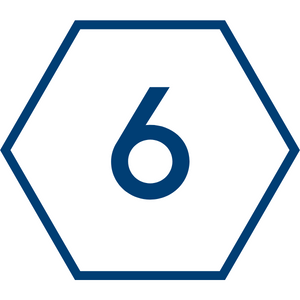Each year of the LDSd competition, we ask participating teams to take on a new challenge in building performance analysis. For 2022 the question “How low can you go?” refers to operational energy, operational carbon emissions, embodied/emitted carbon, and water consumption. In parallel, the competition asks “How well can you do?” in terms of indoor environmental quality.
The 2022 LDSd model building will be located in Albuquerque, NM. Participating Teams will design a K-5 school to serve 450 students in an educational setting that provides appropriate spaces for elementary education as well as community uses—and can be adapted to future challenges and changes.
Here’s your chance to join an integrated team that will compete for fun and prizes in the annual LowDown Showdown modeling competition. Sign up today and create your own team or sign up as an individual participant and we will put you on a team! Bring your imagination and analytical skills to the party and create the low environmental impact/high environmental quality school of the future!
General Description | Return to Top
The 2022 LowDown Showdown building is a new K-5 elementary school for 450 students that includes educational spaces, office spaces, support spaces, indoor common spaces (for eating and assembling), and indoor and outdoor physical activity spaces. The challenge in the design of this new building will be to minimize carbon emissions, related to both operation and construction materials, while providing exceptional indoor environmental quality and creating a structure that is both adaptable and durable.
Location | Return to Top
Albuquerque, NM
Design Requirements | Return to Top
- Carbon: The project will be designed to reduce carbon emissions both from building operations and from materials of construction. Operational carbon will be commensurate with that of a net-zero energy building; emitted/embodied carbon will be representative of better-than-current-best-practices and will include consideration of building mechanical, electrical, and plumbing (MEP) systems.
- Comfort: The project will provide thermal, visual, and acoustical comfort fully in compliance with LEED BD&C (Schools) and demonstrating awareness of expectations in the WELL Standard. Intended comfort outcomes and design approaches will be documented.
- Indoor Air Quality: The project will incorporate best-in-class design responses to ensure acceptable indoor air quality and display an understanding of design to mitigate the spread of airborne diseases.
- Adaptability: The project will be designed to be adaptable across a projected 75-year life span. Adaptability will be assumed to include: teaching modalities, interactions with and support of community engagement, energy costs, and reliability.
- Durability: Design decisions will reflect a concern for a durable project.
Spatial Requirements | Return to Top
The building will provide appropriate spaces for the education of 450 elementary school students as well as community uses—and be adaptable to future challenges and changes. The nominal expectation for conditioned floor area is 75,000 ft2 [7000 m2], but the competition provides the design teams flexibility in the inclusion of fully-conditioned, partially-conditioned, and unconditioned spaces to meet the program. Specialty class spaces for STEM, art, and music are required, as are a gymnasium, cafeteria, and kitchen. The target construction cost for the project is $225/ft2 [$2420/m2]
Analysis Expectations | Return to Top
Design targets for the following elements will be clearly listed and compared with predicted project performance:
- Site EUI (kBtu/ft2 yr) [kWh/m2 yr]
- Source EUI (kBtu/ft2 yr) [kWh/m2 yr]
- Annual CO2e emissions (lb CO2e/ft2 yr) [kg CO2e/m2 yr]
- Total net embodied carbon (lb CO2e/ft2) [kg CO2e/m2]
- Water usage (gal/ft2 yr) [l/m2 yr]
- Thermal comfort
- Typical classroom: unmet comfort hours
- Assembly space: unmet comfort hours
- Library/media space: unmet comfort hours
- Daylighting
- Typical classroom: sDA and ASE
- Assembly space: sDA and ASE
- Library/media space: sDA and ASE
- Construction cost ($/ft2, exclusive of site acquisition and design costs) [$/m2]
Design Narrative | Return to Top
Teams will be expected to provide a design narrative that provides insights into the design process and decisions leading to the final design proposal. In particular, the competition jurors will be interested in the progression of energy and carbon performance as the project evolved, how best practices for indoor air quality (including consideration of pandemic mitigation) were incorporated, and how visual and acoustical comfort were addressed. The competition urges design teams to use the adaptive thermal comfort zone, including the allowable expansion for air speed, where possible to reduce energy use. Unmet comfort hours should be evaluated according to the comfort zone in effect.
Judging Criteria | Return to Top
|

-
|
Demonstrating the impact of analysis on design results
Presentation materials clearly show that analysis was used to incrementally inform design decisions to allow the team to achieve its explicit design criteria
|
 |
|

-
|
Demonstrating how low-energy and low-carbon results were achieved*
Presentation materials clearly show how operational energy and embodied carbon targets were established and how the design-analysis process supported reaching those targets
|
 |
|

-
|
Demonstrating how desirable indoor environmental quality was achieved*
Presentation materials clearly show how indoor environmental quality design criteria were established and how the design-analysis process supported reaching those targets
|
 |
|

-
|
Innovation in design approach and in analysis approach
Presentation materials explain key areas of design innovation (the use of an adaptive comfort zone, the use of exterior spaces for programmatic purposes, etc.) and important areas of innovation in analysis (unique or custom simulations, etc.)
|
 |
|

-
|
Clarity in workflow
Presentation materials explain the design-analysis process workflow, with an emphasis on analysis informing design decisions
|
 |
|

-
|
Crispness in presentation
The presentation materials (graphic and verbal) are clear, informative, and exciting
|
 |
*These evaluations will be informed by a maximum 60-minute consultation session where each team will be asked to walk through its modeling details for operational energy, embodied carbon, indoor air quality, and thermal comfort.
Important Dates | Return to Top
- April 15 | Judges announced on website
- June 3 | Last day to ask questions
- August 1 | Deliverables Due | Results Spreadsheet | One Page Narrative | Poster
- August 5 | Round 1 Judging Complete
- August 8 | Presentation Notifications to teams
- August 22 | PowerPoint Presentations Due
- August 29 | Deadline for revisions (commercialism, data, etc.)
- September 15 | Present Model at Conference